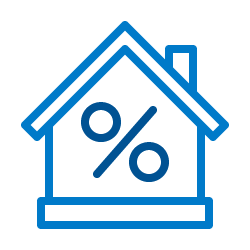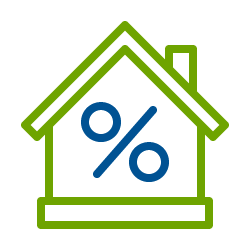¿Qué es la TAE y cómo funciona?

Si tienes un préstamo o una tarjeta de crédito, lo más probable es que hayas oído hablar de la tasa anual equivalente (TAE). En el mundo de las finanzas, puede resultar difícil recordar todas estas siglas y sus finalidades, ¡y la TAE es una de ellas! Puede parecer relativamente sencillo, pero no todo el mundo sabe a ciencia cierta cómo funciona el cálculo de los intereses.
¿Qué es la TAE?
La tasa anual equivalente (TAE) de un préstamo o tarjeta de crédito es el coste total que pagas cada año por pedir dinero prestado, expresado en porcentaje. Según la Oficina de Protección Financiera del Consumidorla TAE es una medida más amplia del coste que supone para usted pedir dinero prestado, ya que refleja no sólo el tipo de interés, sino también las comisiones que tiene que pagar para obtener el préstamo". Así que, básicamente, si tienes una TAE más alta, acabarás pagando más durante la vida del préstamo.
Cómo funciona la TAE
La TAE se expresa como un tipo de interés, que se calcula como un porcentaje del importe que le han prestado.
Es importante saber que el cálculo de los intereses mediante la TAE no es igual para todos los tipos de préstamos, y que los cálculos pueden depender de otros factores como interés compuesto. En este ejemplo, utilizaremos la TAE para calcular el interés mensual de una cuenta de tarjeta de crédito pendiente (suponiendo que no haya comisiones).
1. Convierta su TAE en una tasa diaria. Para ello, divide tu TAE actual entre 365.
Ejemplo: 14,99% / 365 = 0,041%
2. El saldo de su tarjeta de crédito puede cambiar cada día a medida que realiza pagos y añade nuevos cargos. Su entidad financiera calculará el saldo medio diario basándose en esta información. Si su saldo fluctuara uniformemente entre $2.000 y $3.000, su saldo medio diario sería de $2.500.
Ejemplo: $2,500
3. Multiplique el saldo medio diario por el tipo de interés diario del primer paso. Recuerda que para convertir el tipo de interés en decimal, debes desplazar el punto decimal dos espacios a la izquierda.
Ejemplo: $2.500 x 0,00041 = $1,03
4. Por último, multiplíquelo por el número de días del periodo de facturación. Esto le dirá aproximadamente cuántos intereses está pagando por ese periodo de facturación.
Ejemplo: $1,03 x 30 = $30,90
Conocer los tipos de TAE
Hay muchos tipos de TAE. Si consulta el extracto de su tarjeta de crédito, verá que tiene una TAE para compras, transferencias de saldo y anticipos en efectivo. Cada TAE varía, y una puede ser más alta que otra.
Tarifas de lanzamiento y regulares
Algunas empresas de tarjetas de crédito también ofrecen tipos introductorios, por lo que es importante conocer la diferencia entre éstos y el tipo normal.
Sanción TAE
También hay una TAE de penalización. Se aplica cuando no se efectúa un pago o se retrasa. Si esto ocurre, algunas compañías de tarjetas de crédito pueden subirte la TAE a un nuevo tipo más alto.
TAE variable frente a TAE fija
Las TAE variables varían en función del tipo de interés preferente. Por ejemplo, si el tipo de interés básico aumenta, también lo hará la TAE, mientras que los tipos fijos no varían durante el plazo del préstamo.
Para llevar
Las tasas anuales efectivas no son tan sencillas como podría pensarse. Existen varios tipos y cada uno se determina de forma diferente. Por suerte, existen recursos como Calculadora.net que ofrecen calculadoras para distintos tipos de préstamos para que puedas calcular tus intereses.
¿El tipo de interés de tu tarjeta de crédito es muy superior al del ejemplo? Las cooperativas de crédito suelen ofrecer tasas más bajas en préstamos y tarjetas de crédito. Puede consultar las tasas de préstamo actuales de Centra aquí.














